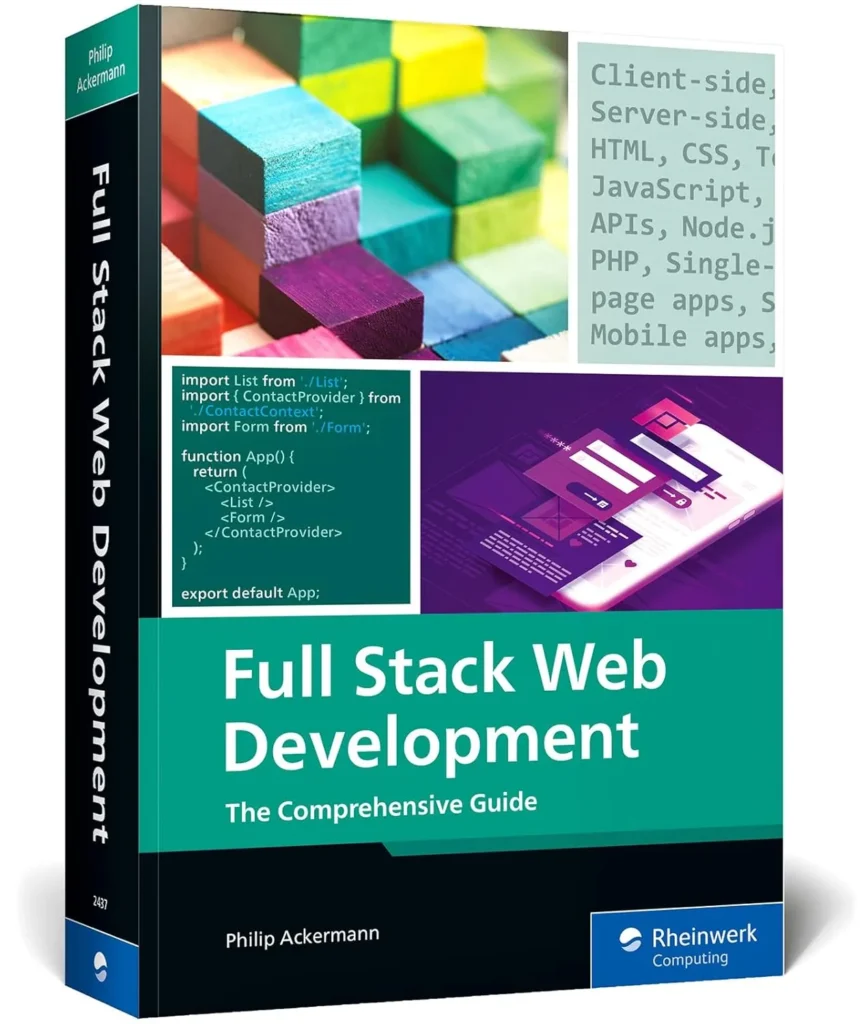Introduction
In the digital age, a website is often the first point of contact between a business and its potential customers. As such, the architecture of a website plays a crucial role in determining its performance, scalability, and user experience. Modern website architecture is divided into two main components: the frontend and the backend. This guide will provide a comprehensive overview of both, exploring their roles, technologies, and best practices to help you build a robust, scalable, and user-friendly website.
1. Understanding Website Architecture
What is Website Architecture?
Website architecture refers to the structure and organization of a website’s components, including its frontend, backend, databases, and servers. It encompasses the design principles, technologies, and methodologies used to build and maintain a website. A well-designed architecture ensures that a website is scalable, maintainable, and performs efficiently under various conditions.
Importance of Website Architecture
- User Experience (UX): A well-structured website architecture enhances user experience by ensuring fast load times, intuitive navigation, and responsive design.
- Search Engine Optimization (SEO): Proper architecture helps search engines crawl and index your site more effectively, improving your search rankings.
- Scalability: A robust architecture allows your website to handle increased traffic and data without compromising performance.
- Maintainability: A well-organized architecture makes it easier to update, debug, and maintain your website over time.
Evolution of Website Architecture
Website architecture has evolved significantly over the years. Early websites were simple, static HTML pages with minimal interactivity. As the internet grew, dynamic websites emerged, powered by server-side scripting languages like PHP and databases like MySQL. Today, modern websites are built using a combination of frontend and backend technologies, often leveraging frameworks, libraries, and APIs to create highly interactive and responsive user experiences.
2. Frontend Architecture
What is Frontend Architecture?
Frontend architecture refers to the structure and organization of the client-side components of a website. This includes everything that users interact with directly, such as the layout, design, and functionality of the website. The frontend is responsible for rendering the user interface (UI) and ensuring a seamless user experience.
Key Components of Frontend Architecture
- HTML (HyperText Markup Language): The backbone of any website, HTML defines the structure and content of web pages.
- CSS (Cascading Style Sheets): CSS is used to style and layout web pages, controlling aspects like colors, fonts, and spacing.
- JavaScript: JavaScript adds interactivity to web pages, enabling features like form validation, animations, and dynamic content updates.
- Frontend Frameworks and Libraries: Tools like React, Angular, and Vue.js help developers build complex, interactive UIs more efficiently.
Popular Frontend Frameworks and Libraries
- React: Developed by Facebook, React is a JavaScript library for building user interfaces. It uses a component-based architecture, making it easy to reuse code and manage state.
- Angular: Developed by Google, Angular is a full-fledged frontend framework that offers a comprehensive solution for building dynamic web applications.
- Vue.js: Vue.js is a progressive JavaScript framework that is easy to integrate into existing projects. It is known for its simplicity and flexibility.
Best Practices for Frontend Development
- Responsive Design: Ensure your website is accessible and functional across all devices, including desktops, tablets, and smartphones.
- Performance Optimization: Minimize load times by optimizing images, using efficient code, and leveraging browser caching.
- Accessibility: Follow web accessibility guidelines (e.g., WCAG) to make your website usable by people with disabilities.
- Cross-Browser Compatibility: Test your website on different browsers to ensure consistent performance and appearance.
3. Backend Architecture
What is Backend Architecture?
Backend architecture refers to the server-side components of a website that handle data processing, storage, and business logic. The backend is responsible for managing databases, server configuration, and application logic, ensuring that the frontend has the data and functionality it needs.
Key Components of Backend Architecture
- Server: The server is the backbone of the backend, handling requests from the frontend and returning the appropriate responses.
- Database: Databases store and manage the data used by the website. Common databases include MySQL, PostgreSQL, and MongoDB.
- Application Logic: This includes the business logic and algorithms that process data and perform tasks based on user inputs.
- APIs (Application Programming Interfaces): APIs allow the frontend and backend to communicate, enabling data exchange and functionality.
Popular Backend Frameworks and Technologies
- Node.js: A JavaScript runtime built on Chrome’s V8 engine, Node.js allows developers to build scalable and high-performance backend applications.
- Django: A high-level Python web framework, Django encourages rapid development and clean, pragmatic design.
- Ruby on Rails: A server-side web application framework written in Ruby, Rails is known for its simplicity and productivity.
- Spring Boot: A Java-based framework, Spring Boot simplifies the development of production-ready applications.
Best Practices for Backend Development
- Security: Implement robust security measures, including data encryption, authentication, and authorization.
- Scalability: Design your backend to handle increased traffic and data by using load balancing, caching, and database optimization.
- Code Quality: Write clean, maintainable code and follow best practices like DRY (Don’t Repeat Yourself) and SOLID principles.
- Documentation: Maintain comprehensive documentation for your backend code, APIs, and database schema.
4. Frontend and Backend Integration
How Frontend and Backend Communicate
Frontend and backend components communicate through APIs. When a user interacts with the frontend (e.g., submitting a form), the frontend sends a request to the backend. The backend processes the request, interacts with the database if necessary, and returns a response to the frontend, which then updates the UI accordingly.
APIs: The Bridge Between Frontend and Backend
APIs (Application Programming Interfaces) define the methods and data formats that the frontend and backend use to communicate. APIs can be RESTful, GraphQL, or use other protocols like WebSockets for real-time communication.
RESTful APIs vs GraphQL
- RESTful APIs: REST (Representational State Transfer) is an architectural style that uses standard HTTP methods (GET, POST, PUT, DELETE) to perform CRUD (Create, Read, Update, Delete) operations. RESTful APIs are stateless and cacheable, making them simple and scalable.
- GraphQL: GraphQL is a query language for APIs that allows clients to request exactly the data they need. Unlike REST, which requires multiple endpoints, GraphQL uses a single endpoint, reducing over-fetching and under-fetching of data.
Real-time Communication with WebSockets
WebSockets enable real-time, bidirectional communication between the frontend and backend. Unlike HTTP, which is request-response based, WebSockets maintain a persistent connection, allowing the server to push updates to the client instantly. This is useful for applications like chat apps, live notifications, and online gaming.
5. Modern Trends in Website Architecture
Microservices Architecture
Microservices architecture is an approach where a single application is composed of multiple small, independent services. Each service runs in its own process and communicates with other services via APIs. This architecture offers several benefits, including scalability, flexibility, and easier maintenance.
Serverless Architecture
Serverless architecture allows developers to build and run applications without managing servers. Instead, cloud providers like AWS, Azure, and Google Cloud handle server management, scaling, and maintenance. Serverless functions are event-driven, meaning they execute code in response to specific events, such as HTTP requests or database changes.
Jamstack Architecture
Jamstack (JavaScript, APIs, and Markup) is a modern web development architecture that decouples the frontend from the backend. Jamstack sites are pre-rendered and served as static files, with dynamic functionality provided by APIs. This approach offers improved performance, security, and scalability.
Progressive Web Apps (PWAs)
Progressive Web Apps (PWAs) are web applications that offer a native app-like experience. PWAs are built using standard web technologies (HTML, CSS, JavaScript) but can be installed on a user’s device and work offline. They offer features like push notifications, background sync, and fast loading times.
6. Security Considerations
Frontend Security Best Practices
- Input Validation: Validate all user inputs to prevent injection attacks like SQL injection and XSS (Cross-Site Scripting).
- HTTPS: Use HTTPS to encrypt data transmitted between the frontend and backend, protecting it from eavesdropping and tampering.
- Content Security Policy (CSP): Implement CSP to prevent unauthorized execution of scripts and other resources.
Backend Security Best Practices
- Authentication and Authorization: Use strong authentication mechanisms (e.g., OAuth, JWT) and implement role-based access control (RBAC) to restrict access to sensitive data.
- Data Encryption: Encrypt sensitive data at rest and in transit to protect it from unauthorized access.
- Regular Security Audits: Conduct regular security audits and vulnerability assessments to identify and address potential security risks.
Data Encryption and Secure Communication
- SSL/TLS: Use SSL/TLS certificates to encrypt data transmitted between the client and server.
- Hashing: Hash sensitive data like passwords before storing them in the database to protect them from being exposed in case of a data breach.
Regular Security Audits and Updates
- Patch Management: Regularly update your software, libraries, and dependencies to protect against known vulnerabilities.
- Penetration Testing: Conduct penetration testing to identify and fix security vulnerabilities before they can be exploited.

Full Stack Web Development: A Comprehensive, Hands-On Guide to Building Modern Websites and Applications (IBPA Gold Award Winner) (Rheinwerk Computing)
7. Performance Optimization
Frontend Performance Optimization
- Minification and Compression: Minify and compress CSS, JavaScript, and HTML files to reduce their size and improve load times.
- Lazy Loading: Implement lazy loading for images and other resources to defer their loading until they are needed.
- Code Splitting: Use code splitting to load only the necessary JavaScript code for each page, reducing initial load times.
Backend Performance Optimization
- Database Optimization: Optimize database queries, use indexing, and denormalize data where necessary to improve query performance.
- Caching: Implement caching strategies like in-memory caching (e.g., Redis) and HTTP caching to reduce server load and improve response times.
- Load Balancing: Use load balancers to distribute traffic evenly across multiple servers, preventing any single server from becoming a bottleneck.
Caching Strategies
- Browser Caching: Leverage browser caching to store static assets locally, reducing the need to download them on subsequent visits.
- Server-Side Caching: Use server-side caching to store frequently accessed data in memory, reducing the need to query the database repeatedly.
- CDN Caching: Use a Content Delivery Network (CDN) to cache and serve static assets from servers located closer to the user, reducing latency.
Content Delivery Networks (CDNs)
CDNs are distributed networks of servers that deliver web content to users based on their geographic location. By caching and serving content from servers closer to the user, CDNs reduce latency, improve load times, and enhance the overall user experience.
8. Scalability and Maintenance
Scaling Frontend and Backend
- Horizontal Scaling: Add more servers to distribute the load and handle increased traffic.
- Vertical Scaling: Increase the resources (e.g., CPU, RAM) of existing servers to handle more traffic.
- Auto-Scaling: Use auto-scaling solutions provided by cloud providers to automatically adjust the number of servers based on traffic.
Continuous Integration and Continuous Deployment (CI/CD)
CI/CD is a set of practices that automate the process of integrating code changes and deploying them to production. CI/CD pipelines help ensure that code is tested, built, and deployed consistently, reducing the risk of errors and speeding up the development process.
Monitoring and Logging
- Application Monitoring: Use monitoring tools to track the performance and health of your application in real-time.
- Logging: Implement logging to capture and store information about application events, errors, and user activities. Logs are invaluable for debugging and auditing.
Disaster Recovery and Backup Strategies
- Regular Backups: Perform regular backups of your database and application data to ensure that you can recover from data loss or corruption.
- Disaster Recovery Plan: Develop a disaster recovery plan that outlines the steps to take in case of a major failure, such as a server crash or data breach.
9. Conclusion
The Future of Website Architecture
As technology continues to evolve, so too will website architecture. Emerging trends like AI-driven development, edge computing, and decentralized web technologies are poised to shape the future of how websites are built and maintained. Staying ahead of these trends will be crucial for developers and businesses alike.
Final Thoughts
Building a modern website requires a deep understanding of both frontend and backend architecture. By following best practices, leveraging the right technologies, and staying informed about emerging trends, you can create a website that is not only visually appealing but also scalable, secure, and performant. Whether you’re a seasoned developer or just starting out, this guide provides the foundational knowledge you need to navigate the complex world of website architecture.
This comprehensive guide covers the essential aspects of modern website frontend and backend architecture, providing you with the knowledge and tools to build a successful website. By following the best practices and staying informed about the latest trends, you can ensure that your website meets the needs of your users and stands out in the competitive digital landscape.
See Also
-

The Ultimate Domain & Hosting Guide: Everything You Need to Know Before Getting Started
-

Blogger vs WordPress: Which One Suits Your Content Goals Better?
-

The Ultimate Website Monitoring Guide: Keep Your Site Fast, Secure & Online 24/7!
-

Turn Your Google Site into a Dynamic Website: A Step-by-Step Guide
-

The Ultimate Guide to Modern Website Frontend & Backend Architecture
-

Step-by-Step Guide: Deploying a XAMPP Web Hosting Server on Azure Windows VM for WordPress